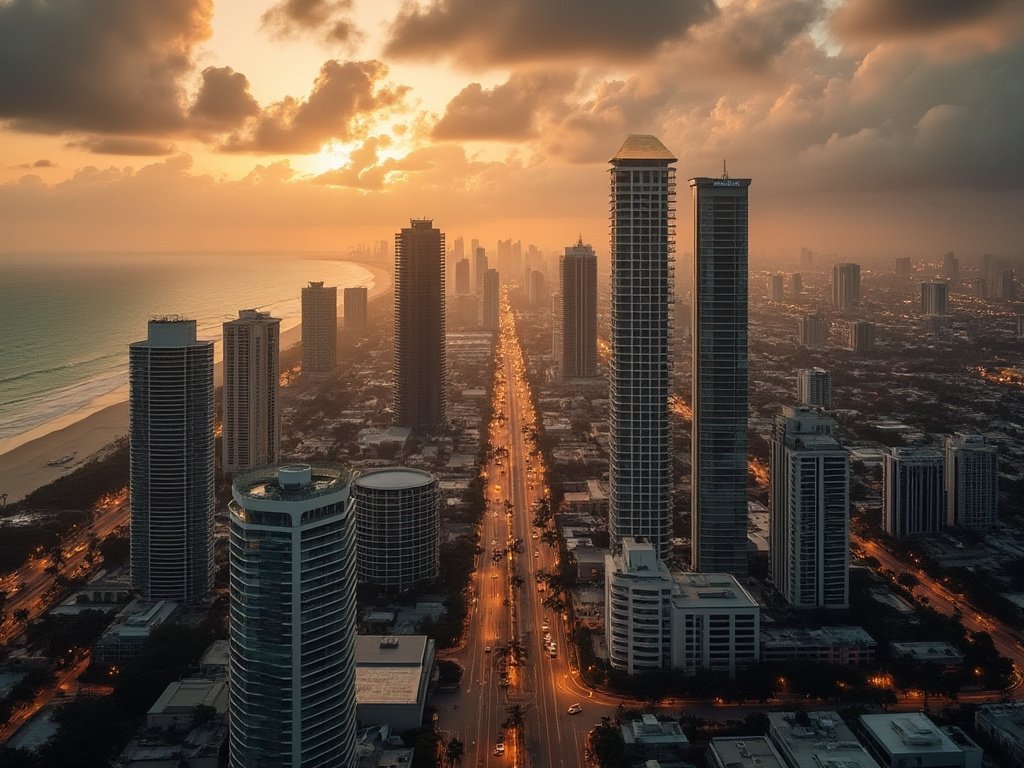Miami is known for its tropical weather, but October 2024 has brought an unusually intense heatwave that is catching even the most seasoned Floridians off guard. With temperatures consistently hitting the low 90s and heat index values soaring over 100 degrees, the city is enduring conditions more typical of mid-summer than early fall. This climate anomaly is pushing both residents and the local infrastructure to their limits, and with the heat showing no signs of subsiding soon, Miami is bracing itself for the environmental, social, and economic ripple effects.
The Heatwave: A Departure From Norms
October is usually a time when Miami begins to see a subtle transition towards cooler weather, with average highs in the mid-80s. However, the first week of October 2024 has shattered those expectations. Temperatures are averaging around 90 degrees, and the heat index—factoring in the oppressive humidity—is regularly exceeding 100 degrees. Local meteorologists are attributing this unseasonable weather to a combination of a strong high-pressure system and global climate patterns that have amplified heat across the Southeastern United States.
Residents are feeling the strain, particularly with the minimal evening relief. Nights in Miami typically cool down to the high 70s, but this heatwave has kept nighttime lows stubbornly close to 80 degrees, prolonging discomfort and limiting the body’s ability to recover from the daytime heat. This lack of overnight cooling is not just an inconvenience; it’s a health concern, especially for vulnerable populations like the elderly, children, and those with pre-existing health conditions.
Public Health Concerns: Rising Temperatures, Rising Risks
As temperatures climb, so do health risks. Heat-related illnesses such as heat exhaustion and heatstroke become more prevalent when the body cannot cool down effectively, a risk exacerbated by Miami’s stifling humidity. Local hospitals are already seeing a spike in emergency room visits tied to heat-related conditions, and public health officials are urging residents to stay hydrated, avoid outdoor activities during peak heat hours, and make use of cooling centers set up across the city.
The National Weather Service has issued advisories urging caution, but so far, the conditions haven’t reached the threshold for an official heat advisory. Regardless, experts are warning that the prolonged heat could have cumulative effects on public health, particularly if temperatures remain elevated through the rest of the month.
Impact on Miami’s Infrastructure
Miami’s infrastructure, while built to handle heat, is not immune to the strain of prolonged extreme temperatures. The electrical grid, in particular, is feeling the pressure as air conditioning units work overtime to keep homes, businesses, and public spaces cool. Florida Power & Light, the region’s main electricity provider, has reported increased energy usage citywide, and while the grid remains stable, officials are closely monitoring for signs of overload that could lead to blackouts.
Public transit systems are also facing challenges. Miami’s Metrorail and bus systems, which already struggle with delays and overcrowding, are seeing a spike in ridership as people avoid walking in the heat. However, older vehicles are more prone to mechanical issues in extreme temperatures, leading to sporadic breakdowns and service interruptions that leave commuters stranded in sweltering conditions.
Environmental Concerns: Miami’s Vulnerability to Climate Change
This heatwave is yet another reminder of Miami’s vulnerability to climate change. While the city is more often associated with the threats of rising sea levels and hurricanes, extreme heat is an equally pressing issue. Climate scientists warn that heatwaves like this one will become more frequent and intense as global temperatures rise, putting further strain on Miami’s already delicate balance between development and sustainability.
The city has made strides in addressing climate resilience, with initiatives to combat sea level rise and storm preparedness, but heat mitigation remains an under-discussed component of climate adaptation. Experts are calling for more robust strategies to tackle urban heat islands—areas where concrete and asphalt trap heat, exacerbating already high temperatures. Solutions such as increasing tree canopy coverage, investing in reflective building materials, and expanding access to green spaces could help Miami better cope with future heatwaves.
Economic Impact: From Tourism to Local Businesses
Miami’s economy, heavily reliant on tourism, is also feeling the heat. October is typically a transitional month for Miami tourism, with visitors starting to trickle in for the cooler winter months. However, the intense heat is deterring outdoor activities, and businesses that rely on outdoor foot traffic, such as beachfront cafes, open-air markets, and outdoor attractions, are seeing a dip in customer numbers. Tourists who do visit are opting for indoor, air-conditioned venues, such as malls, museums, and restaurants, shifting revenue streams away from more traditional outdoor Miami experiences.
Local businesses are being forced to adapt quickly. Restaurants with outdoor seating are investing in misters, fans, and covered patios to keep customers comfortable, while event organizers are rescheduling or relocating outdoor events. Despite these efforts, some events are simply being canceled or postponed, including several smaller-scale festivals and outdoor markets that couldn’t justify the additional costs of heat mitigation.
Relief on the Horizon?
Meteorologists predict that the heatwave will persist at least through mid-October, with only a slight chance of cooler weather as the month progresses. Scattered thunderstorms may bring temporary relief, but they also come with their own set of problems, including flash flooding—a frequent issue in low-lying parts of Miami.
Looking ahead, Miami residents and officials alike are hoping for the arrival of the region’s typical fall weather, with temperatures returning to more manageable levels. In the meantime, the focus remains on staying safe, keeping cool, and ensuring the city’s infrastructure holds up under the unrelenting heat.
A Hot Future for Miami?
The October 2024 heatwave has underscored the challenges that come with living in a city increasingly affected by climate change. While Miami has proven resilient in the face of many environmental challenges, extreme heat presents a different kind of threat—one that requires not just immediate responses, but long-term planning. As the city continues to grow and attract new residents and tourists, finding sustainable ways to adapt to rising temperatures will be crucial to maintaining Miami’s status as a vibrant, livable city.
In the meantime, residents are doing what they can to cope with the heat—staying indoors, cranking up the air conditioning, and hoping for cooler days ahead. But as climate change accelerates, Miami may need to prepare for a future where heatwaves like this one are the new normal.





